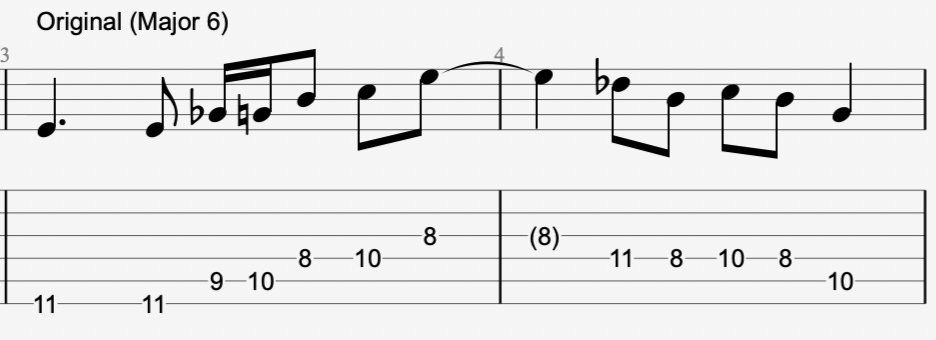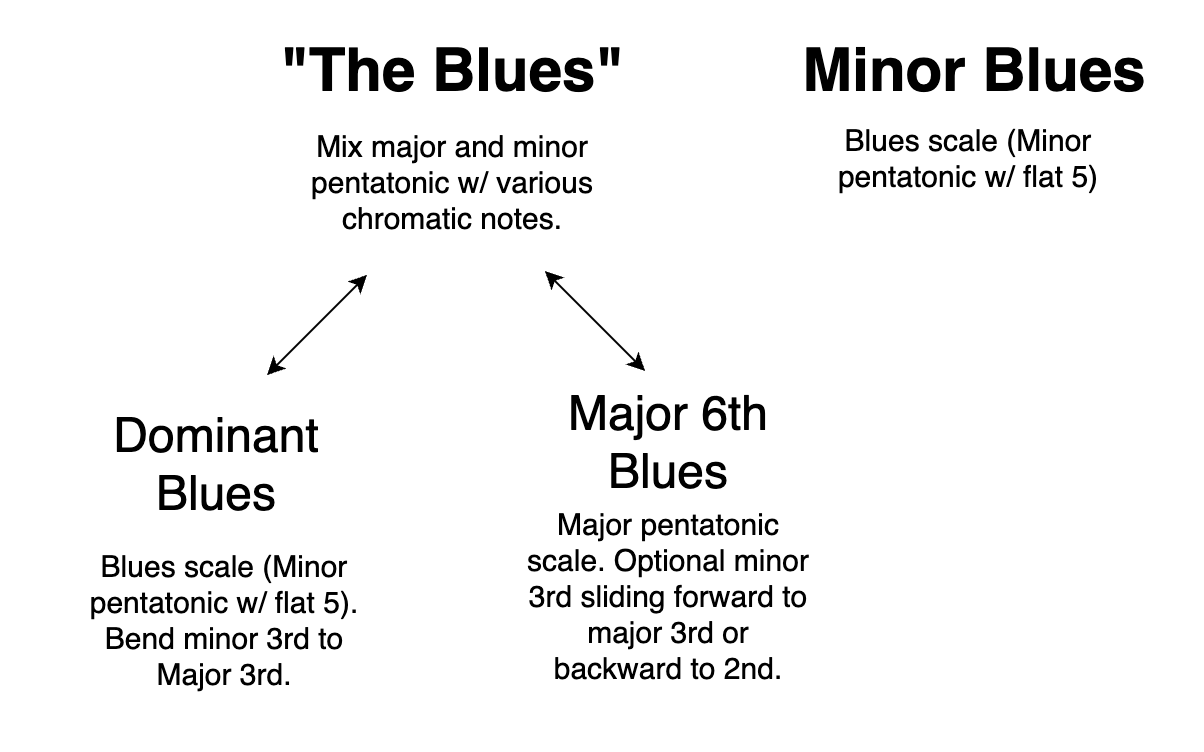Sophisticated Blues is a series where I share the beauty, depth, and nuance of blues guitar. If you prefer audio, check out the free podcast on this topic. There is also an accompanying guitar lesson available on my Patreon.
A couple of months ago, Joe Bonamassa, Josh Smith, & Marc Broussard released a cover of the classic blues song That’s What Love Will Make You Do, and there was something very strange and beautiful about it...
After just a few licks from Joe, it was clear that this was not the same approach as the classic Little Milton version, or even the Jerry Garcia take. I have spent the last month obsessing over the tiny details that set these versions apart, and through the process, I came up with a different take on blues theory and soloing that instantly improved my playing. I believe it can do the same for you.
Before we begin, take a moment to compare the new version above to the Little Milton or the Jerry Garcia version below. See if you can spot the difference (it’s noticeable after just 10 seconds).
Yes, the tempos, keys, and instrumentation are all different, but I want to focus on the different bass lines and very different intro solos. Listen to the example bass lines below (these may not be exact, but they illustrate the point). Both bass lines feature the following intervals: tonic, major 3rd, 5th, major 6th, and dominant 7th. However, the original bass line emphasizes the major 3rd and the major 6th intervals and the new version emphasizes the tonic and the dominant 7 intervals.
Before we continue to why this matters, please consider the following, and let’s start calling this the “standard disclaimer.” I don’t write with the intent of becoming the “authority” on a topic, nor am I a rigorous transcriber. You will find errors, mistakes, oversights, and so on in my writing and transcriptions as we move forward with this series (let’s talk in the comments section!). My only goal is to synthesize concepts that can help improve your playing and clarity of thought. Back to the analysis.
If we return to the Little Milton version, the opening solo starts with a repeated major pentatonic lick over the one chord that further emphasizes the bright sound of major 6ths and major 3rds in the bass line. By contrast, Joe Bonamassa spends the entire solo in the blues scale (minor pentatonic w/ an added flat 5 interval), and he emphasizes the dominant 7th instead of the major 6th. In fact, he only plays the major 6th once in passing to start the solo -I hear that phrase as an homage to the original Little Milton version since they both start with a 5th, to major 6th, to tonic phrase.
Herein lies the beauty of the blues. Such a minuscule difference in the bass lines can open a world of sophistication that we can take advantage of during improvisation. The truth is, you can play the major or the minor pentatonic scale over either bass line and it would sound “correct” if you are righteous in your delivery. That being said, when we make clear choices about minor vs major pentatonic, flat 5ths vs minor 3rds to major 3rds, and so on, we start to approach sophisticated blues.
In future articles, I will dive deeper into the licks, bends, and note choices that help to outline the different flavors of the pentatonic scale. For now, I’ve included one backing track that emphasizes the major sound, and one track that emphasizes the dominant 7 sound on my Patreon along with a mini-lesson to get you started on the right track.
As for the title of this article, A New Blues Theory, none of this is “new,” but I would like to propose the following. You are likely familiar with the standard blues that uses dominant 7s for the one, four, and five chords, and the minor blues that has minor one and four chords and a dominant 7 five chord. I believe these two standard categories should be expanded to three with the following nomenclature, Minor Blues, Dominant Blues, and Major 6 Blues. Please remember that these proposed categories are not “rules” or “laws,” but instead, concepts that can help expand our musical potential, nuance, and sophistication. Yes, the Dominant Blues and the Major 6 Blues both use dominant 7 chords. Yes, you can play a major 6th over either version, but as you heard in the examples, the emphasis does matter.
The Joe Bonamassa version of That’s What Love Will Make You Do is a Dominant Blues. Use your blues scale, sit on the flat 7th, and bend the minor 3rd to a major 3rd. By contrast, the original and Jerry Garcia versions are both what I will call Major 6th Blues. Use your major pentatonic scale, sit on the major 6th, and add a passing minor 3rd between the 2nd and major 3rd. If this seems daunting or confusing, I recommend checking out the lesson associated with this article on my Patreon. You’ll also find a growing archive of mini-lessons and discoveries on rhythm, improvisation, and legato technique. I’m also taking requests for future topics. I’ll leave you with a diagram that I hope clarifies things a bit more.
Want more?
The free podcast version of this newsletter is not a recitation of the article. I chat about the topic and give different examples.
Your support on Patreon makes this possible and there are more lessons there.
You can also find me on YouTube.
Check out Andrefludd.com for other free and paid courses.








It's worth noting that BB King sometimes punctuates an uptown shuffle with a 6th chord on the top four strings. From low to high pitches, that's root, major third, major sixth, and root.